Trigger Warning: Mentions rape and sexual abuse
Journalism like any other space has been consistently seen from the lens of a male-dominated syndrome of forlorn historical and cultural popularity.
The film Writing with Fire directed by Sushmit Ghosh and Rintu Thomas started by sharing data on caste atrocities prevalent across India’s social fragment. Women from the Dalit community bear the brunt of caste-based atrocities in these parochial approaches.
Khabar Lahariya, a leading digital media platform started as a local newspaper and stirred a lot of attention from print to becoming a digital media platform achieving accolades of 200 million followers on their digital platforms.
Writing with Fire starts with journalist Meena interviewing a survivor who is describing her story about four men breaking into the house and raping her.
She describes little details about the incidents, and some of the shots also talk about the power that the men hold and how their lives are in danger. Shots were mostly captured from the phone and identities were blurred during the conversation. “I am very scared and I stay inside most of the time” the woman further adds during the conversation.

At times, when print newspapers are drying their ink, not because of lack of words but due to lack of achieving advertisement, revenue and sales are explicitly wavering from the cost-sell balance. The fear looming around the uncertainty of pricing and the interest and market interest shifting to digital media has been growing on its own popularity fast and soon.
Khabar Lahariya’s undeniable resistance to media offers an example of how media can be inclusive, raw and diverse in their narration somewhere also galvanising the participation of women in media and newsrooms.
Khabar Lahariya which is located in Uttar Pradesh shows impressive prodigious strength, courage, resilience and most importantly the willingness to deliver raw and authentic sources of information.
The woman under the pretext of working in newsrooms lurks a constant danger around their life and constant fear of facing possible threats of sexual assault, getting molested or even rape. In times when digital media is about conversations around mammoth content delivery of aesthetics, design, pulling the audience’s eye, keeping track of maximum traction, and scheduling of information.
Also Read: How The Caste System Subordinates The Lives, Bodies And Agency Of Women
Khabar Lahariya’s undeniable resistance to media offers an example of how media can be inclusive, raw and diverse in their narration somewhere also galvanising the participation of women in media and newsrooms.
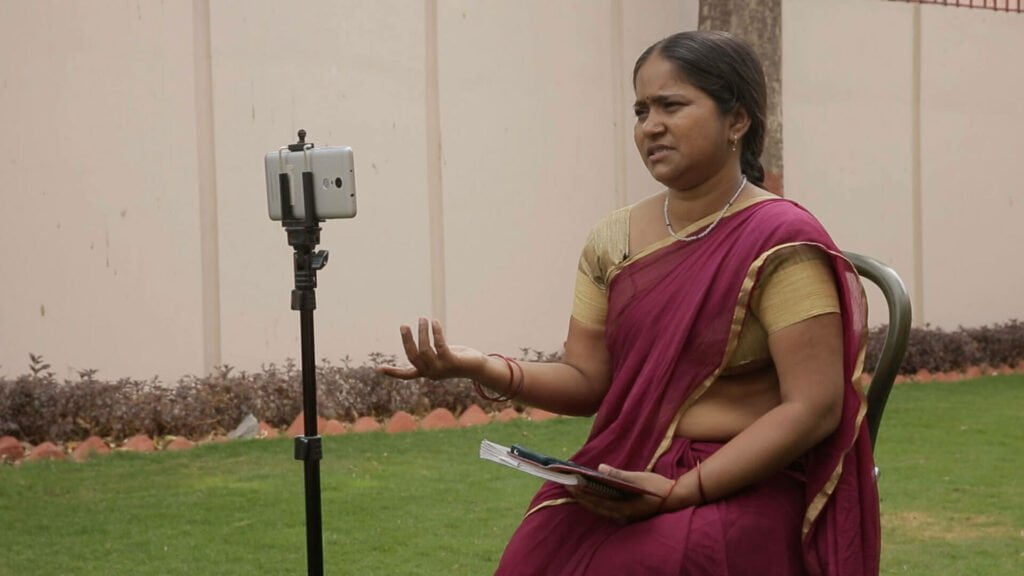
Writing with Fire also portrays the challenges of a newsroom complemented mostly by the presence of women coming from a diverse range of backgrounds including caste and class. Staffed mostly with women coming from the Dalit community, Khabar Lahariya takes a stance on how a media institution perhaps be empirical and critical in its approach.
Several times in the documentary it was shown the woman stands in front of a group of men in secluded locations asking firm and direct questions. One of the time, at the start of the documentary, it was also seen how Meena went to question the gang rape incident with the local police. Many of the women working with the news outlet were seen to find it difficult to understand the use of mobile phones and it was shown in Writing with Fire.
Also Read: Dalit Women, Sexual Violence And The Role Of Media
The sororal solidarity was heartwarming for an audience to see through the film. Interestingly, it also peeks through the gender difference that treats the identity of a particular gender from the lens of progress describing dividend growth.
In one of the scenes, the film also conglomerates the exchanging of information on the use of digital media and phones starting from learning about switching the phone on/off. In the next scene, Meena was also seen travelling with Suneeta where she explains the importance of accessing the situation on the ground and how they can start covering the story.
Writing with Fire not only sneaks into the professional challenges faced by the journalist in the gravitational pool of male-dominated space but also at their personal stance in a reduced structure of women limited to working at home and accountable to small details.
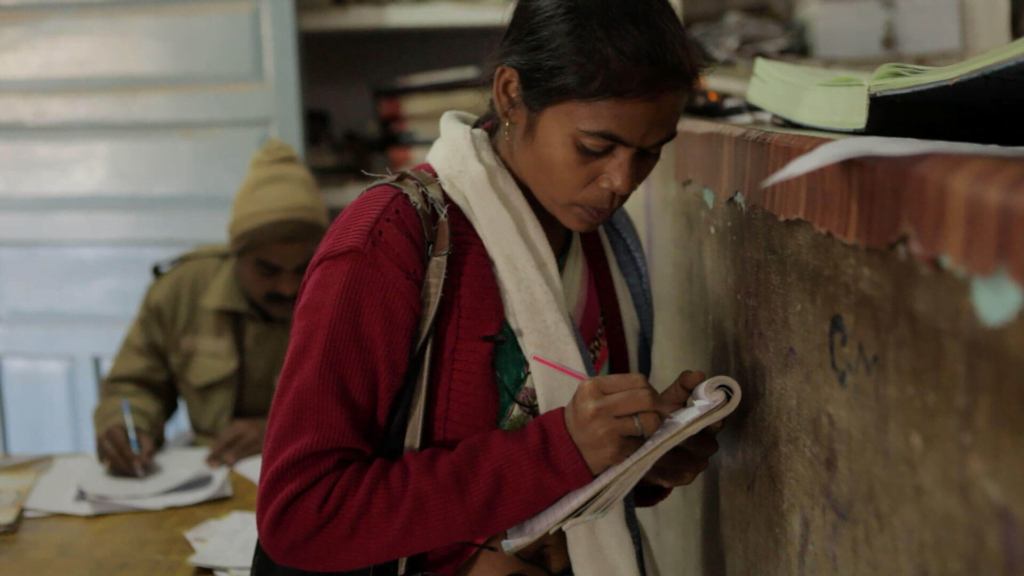
Scenes from reporters’ homes evoke emotions around their lives not only being limited to technical challenges but also domestic oppression. Meera, who is a veteran and an experienced journalist got married at the age of 14, earning 3 degrees. The dynamic and fiery Suneeta cannot afford to get married as her parents address about being unable to afford a dowry, the price mandatory in exchange for “allowing” her the privilege of working.
Srishti Mehra who manages Khabar Lahariya mentions the film is not the most accurate representation of their unbiased feminist reporting. This misrepresentation could “risk the reputation and survival of a credible local news organisation, as well as our team who take care to be perceived as objective, principled reporters,” Mehra further adds.
“If there is a man at the house, how can a woman work,” a man adds during the interview which speaks around the volume of the reduced nature of spectatorship confinement against women. This narrative addresses the concerns of a dismantled society where employability rights are limited to only one gender. Suneeta, one of the journalists also talks about her abusive marriage where she speaks and shakes the idea of her husband abusing her and questioning her identity.
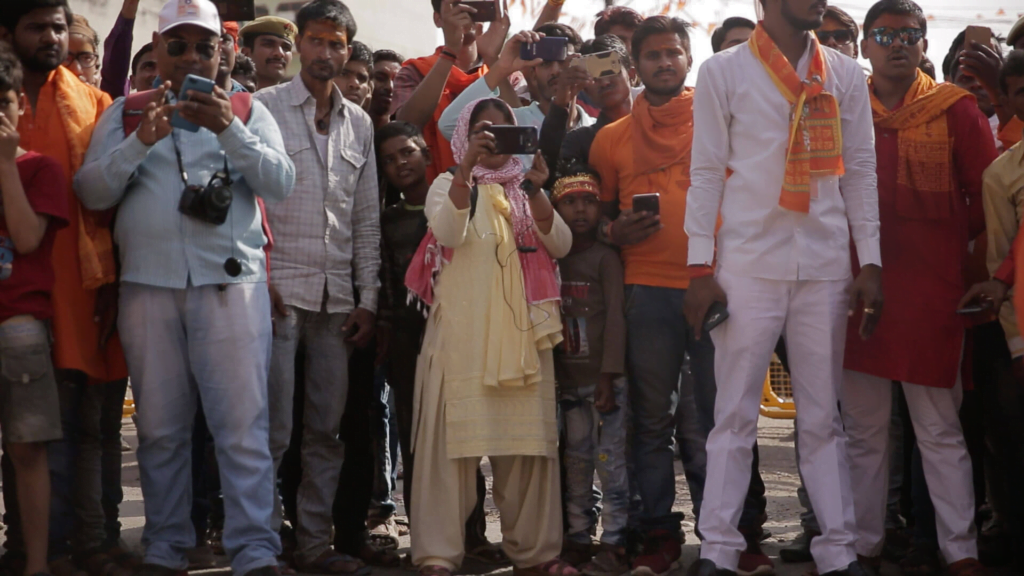
The characters of the journalists in the film swing from their professional discourse of being a journalist to skimming the fact of other identities being women. Despite their constant struggle, the holistic approach of the documentary treatment also shows coverage where Suneeta shares how she asks a person about their caste if she is asked by them.
Also Read: On Turning Twenty and The Oscar Story – Khabar Lahariya Has A Few Things To Say
The proposed treatment for Writing with Fire mostly hustles between the personal graph of the character display to building their own brigade of emotion through professional discourse as a journalist. Later on, where the character stirs emotions not only through their work but also through the delivery of narrative through the objective growth of approach given through the reflection of their personal lives.
Interestingly, the take by Srishti Mehra who manages Khabar Lahariya mentions the film is not the most accurate representation of their unbiased feminist reporting. This misrepresentation could “risk the reputation and survival of a credible local news organisation, as well as our team who take care to be perceived as objective, principled reporters,” Mehra further adds.
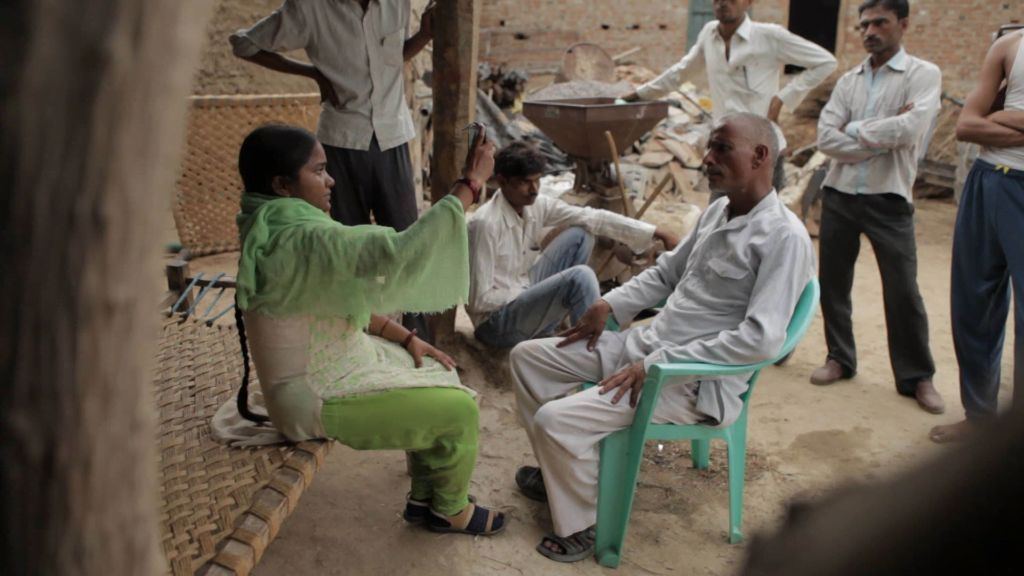
In a statement shared with NPR, filmmakers responded, “We respect that this may not be the film that they would have made about themselves but we stand by this portrayal,” the directors said, adding that they would remain committed supporters of the journalists’ mission. Mehra replied to the statement further by saying the Khabar Lahariya team wishes the filmmakers the very best for the Oscars.
One of the other concerns released by the team has been about the importance of keeping caste discreet during their reporting as it not only further risks the lives of the journalist but also creates an unattended share of the social challenge of untouchability that might make the coverage further difficult.
Also read: FII Interviews: Journalist Meena Kotwal On Minority Politics, Journalism Today And The Caste Divide
The documentary strongly portrays the righteous hold of producing reports on the brutal murder of women while interviewing fellow Dalits about discrimination, while also sketching out information from a Hindu nationalist leader, especially at a time when violence against Muslims, minorities including Dalits is prominently increasing since the same party came into power in 2014.
Writing with Fire also moves around the complex relationship shared by journalists with different stakeholders and the arc of journalism often meets the conflicting territory of engaging with opinion makers, politicians, and authorities.
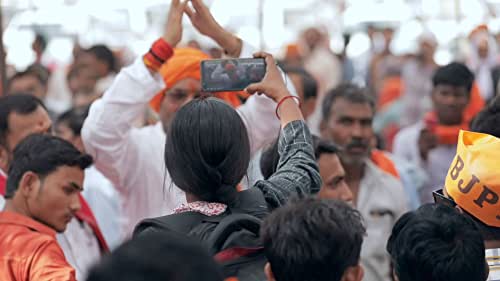
Furthermore, the inclining escalator of media and its closest dependency of graphs on other stakeholders has been historically discussed and concerns were raised.
The end minutes of Writing with Fire portray one scene where it shows the dancing colour of power through the crowd dancing to saffronisation, on the next scene shows the complementary context in the form of Suneeta travelling in a train after covering of report. This derived notion of the contrasting nature of life, relations, people, and power explains the diversity of character display and pathways of individualism. In this track of individual graphs of struggle, the connotation of life is beautifully displayed through the characters one after another.
Writing with Fire ends with movement slow music in the background addressing emotional consciousness and Meena sharing how Khabar Lahariya is pulling rice from the haystack through objective reporting, building emotional consciousness and also holding the powerful accountable through their reporting.
Also read: Podcast: The Power Of Non-Fiction Storytelling Ft. Rintu Thomas
About the author(s)
Ritwik is a northeastern Bahujan who has been a journalist for 2 years. He has also been a UN fellow for the year 2021-22. He has worked on several papers like writing about reportage in broadcast media on women impacted by floods in the northeast. He is currently working on queer representation in the regional press of Assam. Most of the work focused on gender, sexuality, intersectionality, climate change, marginalised and vulnerable communities and data journalism.
He has been a contributing writer at Youth ki Awaaz, Feminism in India and Swaddle for the last 4 years.






